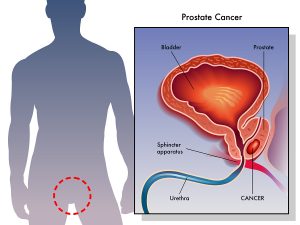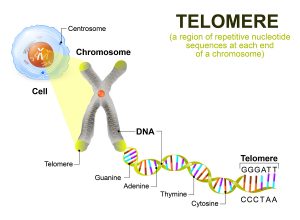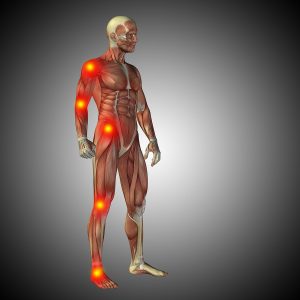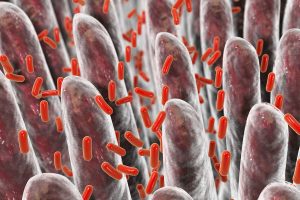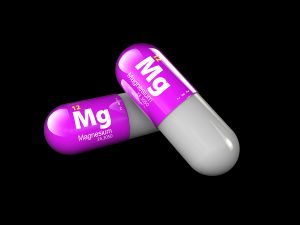Advanced glycation end products (AGEs) form through cooking food at high temperatures. Sugar molecules react with proteins crosslinking them and changing how they function. It prevents proteins from doing their job. Glycation also causes inflammation, which damages mitochondria, the power packages inside cells that provide the body with energy. Overall AGEs lead to premature aging, which comes from the toxic protein reactions. Advanced glycation end products accumulate as glycated proteins in the tissues of the body. This leads to mitochondrial dysfunction.
Effect of advanced glycation end products (AGEs) on the body
The toxic effects of AGEs frequently occur in the following tissues.
- The accumulation of AGEs can cause kidney disease and kidney failure (renal failure). In this case the kidneys no longer filter the blood to excrete waste. Hemodialysis may be necessary.
- AGEs damager joint cartilage, so it can no longer handle stress and joint stiffness sets in. AGEs are now recognized as a major cause of osteoarthritis.
- Cross-linked proteins from AGEs can cause Alzheimer’s and Parkinson’s disease. Damaged proteins accumulate in brain cells that disable and kill them eventually.
- Glycation of LDL particles is an important cause of increasing the plaque formation in arteries by LDL. Glycated LDL is much more susceptible to oxidation than regular LDL. Oxidized LDL causes damage to the lining of the arteries and destroys endothelial nitric oxide synthase. This is a critical enzyme that maintains vasodilatation and blood flow. When glycation of LDL has set in, LDL receptors can no longer recognize it. This means that glycated LDL continues to circulate in the bloodstream where it contributes to the atherosclerotic process. It forms a plaque which becomes a reason for heart attacks and strokes. Glycation of LDL is particularly common in patients with diabetes.
- Glycation of the skin sensitizes the skin to UV light damage. It triggers oxidative stress that increases the risk of skin cancer.
- Glycation damages our eyes. It causes clouding of the lens (cataracts) and it damages the retina. Macular degeneration can ultimately cause blindness.
- When glycation affects the discs in the spinal cord, this can cause disc protrusions and disc herniations. Injuries to the nearby spinal nerves can happen causing limping and leg or arm weakness.
Nutrients to counter AGEs
There are nutrients that can slow down the rate of glycation and as a result will halt the aging process.
Benfotiamine
Benfotiamine is a fat-soluble form of the water-soluble vitamin B1 (thiamine). It can reverse glycation in cell cultures and in humans.
As a result the damage to the cells that are lining arteries is reduced. Benfotiamine also counters diabetic neuropathy, retinopathy and nephropathy.
Pyridoxal 5’-phosphate
Pyridoxal 5’-phosphate is a metabolite of vitamin B6. It is similar to benfotiamine in that it counters glycation and dissolves deposited AGEs. It is particularly useful to stop fat and protein glycation. In diabetic patients lipid glycation is often a problem as these authors have shown. Pyridoxal 5’-phosphate traps glucose breakdown products before they become part of glycation reactions.
Carnosine
Carnosine is a dipeptide, made up of the amino acids histidine and beta-alanine. It is found in higher concentration in muscle and brain tissue. Carnosine scavenges for free radicals and prevents AGE formation. This prevents both lipid glycation and protein glycation. This publication states that carnosine can play a role in preventing Alzheimer’s disease. Carnosine prevents protein crosslinking. The result is that tangled protein clumps cannot accumulate and cause Alzheimer’s disease.
Carnosine also reduces blood lipid levels and stabilizes atherosclerotic plaques. This reduces the risk of plaque rupture, which can cause a heart attack or stroke.
Carnosine also has a mitochondria stabilizing function resisting the destructive effects of oxidative stresses.
Luteolin
Many plants contain luteolin, which is a bioflavonoid. It has anti-inflammatory effects and works by suppressing the master inflammatory complex, called NF-kB. NF-kB triggers the production of multiple cytokines and is the cause of many cancers, chronic diseases, autoimmune diseases and septic shock. Kotanidou et al. did an experiment where they injected mice with Salmonella enteritis toxin, either with or without luteolin protection. Without luteolin only 4.1% of the mice survived on day 7. With luteolin protection 48% were alive on day 7.
Luteolin has been shown to be effective as an anti-inflammatory in the brain, the blood vessel lining, intestines, skin, lungs, bone and gums.
All these four supplements are available in the health food store. They work together and would be recommendable in diabetic patients where glycation is most prominent. But these supplements are also useful for older people who want to slow down the aging process in general.
Nutrients to slow down mitochondrial aging
Glycation causes mitochondrial deterioration and dysfunction. It accelerates aging in every aspect. AGEs (advanced glycation end products) crosslink proteins, lipids, but also damage enzymes and DNA. Glycation causes a slow down of mitochondrial energy production. The end result is a lack of energy and slower repair processes, which all depend on mitochondrial energy production. The following supplements have shown some merit in reversing this process.
Pyrroloquinoline quinone (PQQ)
PPQ is a supplement that is known to produce new mitochondria in cells. This helps the energy metabolism of aging cells to recover.
Taurine
Taurine is an amino acid that occurs abundantly in heart and skeletal muscles cells, brain cells and cells of the retina. These are areas in the body with high metabolic rates that can burn out mitochondria. Taurine regulates enzymes in mitochondria that harvest energy from food substances. In patients who experience accelerated aging, a lack of taurine can produce an energy crisis. But supplementation with taurine can rescue the cells by reducing oxidative stress and restoring the function of mitochondria in cells that are aging. Brain cells were putting out new shoots, called neurites when taurine was given as a supplement. This helps to improve brain connection, and preserves memory and cognition.
R-lipoic acid
R-lipoic acid helps to extract energy from foods and support mitochondrial function. When R-lipoic acid is given to aging animals, their metabolic function improves, the mitochondria become healthier and there are less oxidative stress-inducing byproducts. It protects their liver, heart and brain cells from oxidative stress in their mitochondria. It is becoming known as an energy-giving supplement.
Conclusion
Sugar overconsumption and overcooking food cause advanced glycation end products (AGEs) through lipid and proteins cross-linking. This leads to premature loss of organ function. The mitochondria are also slowed down. This creates premature aging. Fortunately there are a few supplements like benfotiamine, pyridoxal 5’-phosphate, carnosine and luteolin. They protect against glycation. Mitochondria can also be protected by PPQ, taurine and R-lipoic acid. Although we cannot stop the aging process, avoiding sugar and stopping to consume overcooked food, such as barbecued meats and deep fried food is a sensible step in prevention. Aging can slow down significantly with this approach and some supplements.

